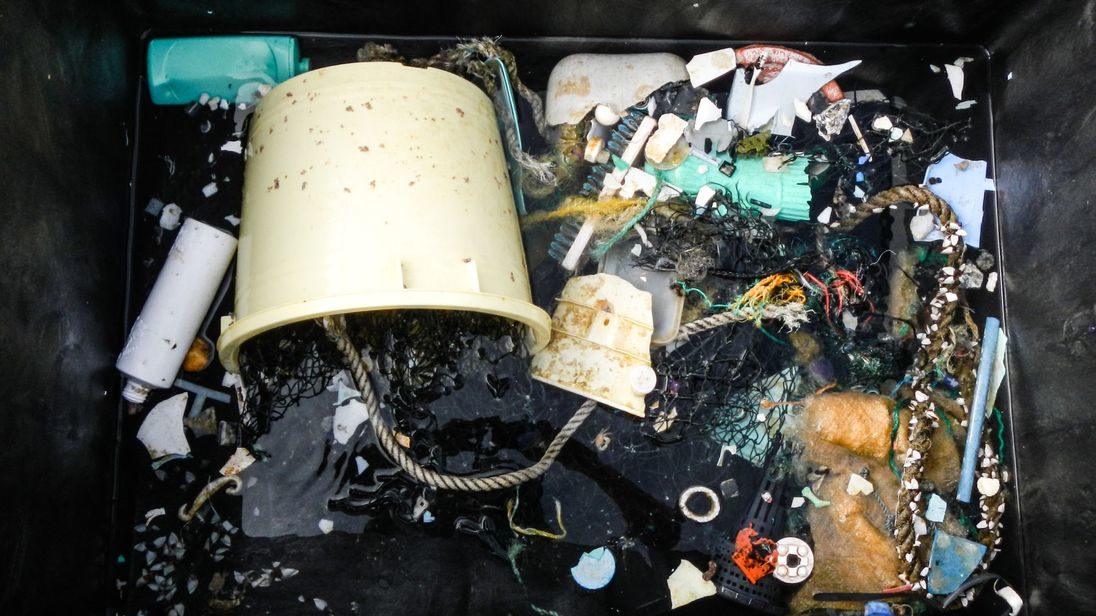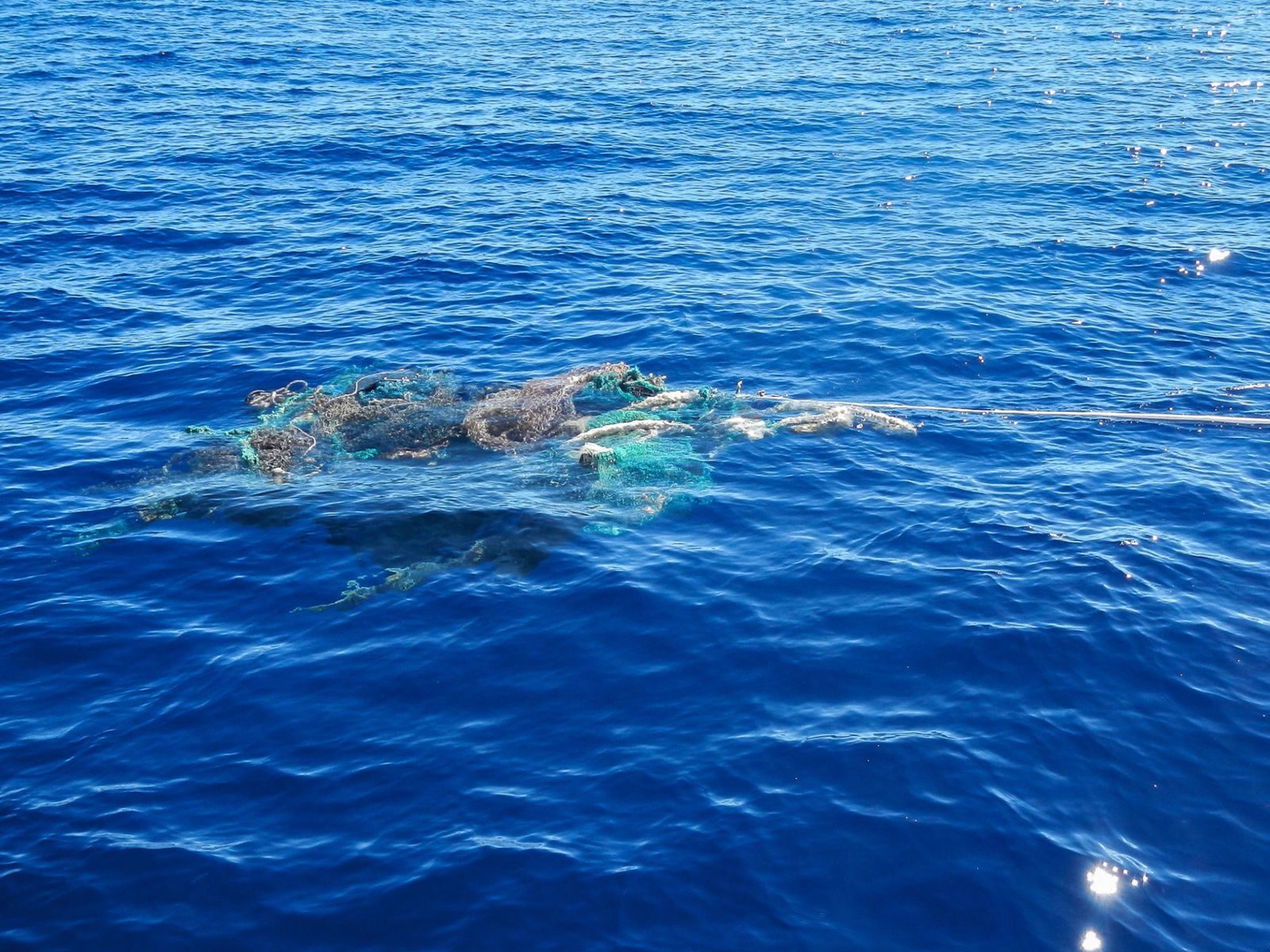
© The Ocean CleanupPlastic samples collected during an expedition in 2015.
The Great Pacific Garbage Patch - the largest accumulation of ocean plastic on the planet - contains even more debris than scientists had feared, according to new research.
The most comprehensive survey of the area, which lies midway between California and Hawaii, shows there are 1.8 trillion pieces of plastic weighing a total of 80,000 tonnes.
That is between four and 16 times more than had been previously estimated.Scientists working for The Ocean Cleanup Foundation and six universities simultaneously dragged sieve-like nets hundreds of miles across the ocean surface, collecting 1.2 million plastic samples.
Meanwhile, two flights by a C-130 Hercules aircraft fitted with special camera sensors scanned 300 square kilometres of ocean to quantify large pieces of plastic.
The results, published in the journal
Nature Scientific Reports, reveal
the garbage patch now spans 1.6 million square kilometres - three times the size of France.
© The Ocean CleanupThere are 1.8 trillion pieces of plastic in the Great Pacific Garbage Patch.
Dr Laurent Lebreton, lead author of the study, told Sky News:
"It's a strange feeling being so far from land and finding so much plastic. It's frightening."You find objects you see in your kitchen - bottles, crates and containers - but also fishing gear.
"You have all those larger debris and nets and find dead fish around it so we are really causing harm out there."
Almost half the plastic by weight was 'ghost' fishing gear - nets that have been abandoned or lost overboard and continue to catch fish.Fifty items recovered from the water had readable production dates - one from as long ago as 1977.
The scientists found an average of 1.2kg of plastic in every square kilometre of ocean surface - three times the density of the 1970s, suggesting debris is rapidly accumulating.
"We know plastic disappears from the sea surface over time, whether it is ingestion from marine life or degradation into smaller pieces, which sink more easily," said Dr Lebreton.
"The concentration of plastic in the ocean is increasing, particularly inside the patch - the influx is greater than the natural outflux.
"We must stop putting plastic in the ocean."

© The Ocean CleanupDiscarded fishing gear in the Great Pacific Garbage Patch.
The Ocean Cleanup Foundation is currently assembling a long floating screen that will be deployed in the garbage patch later this year. The screen will act as an artificial coastline, collecting plastic.
Its designers expect a fleet of collection systems to remove 50% of the plastic in the garbage patch within five years.
The project is controversial, with other scientists arguing that the fish will aggregate underneath the device and consume the debris.
They believe changing consumer behaviour and the use of plastic is a more sustainable long-term solution to the problem.
Comment: For details about another recent investigation concerning this worrisome problem, see: Future of the Sea report: Ocean plastic projected to triple within seven years